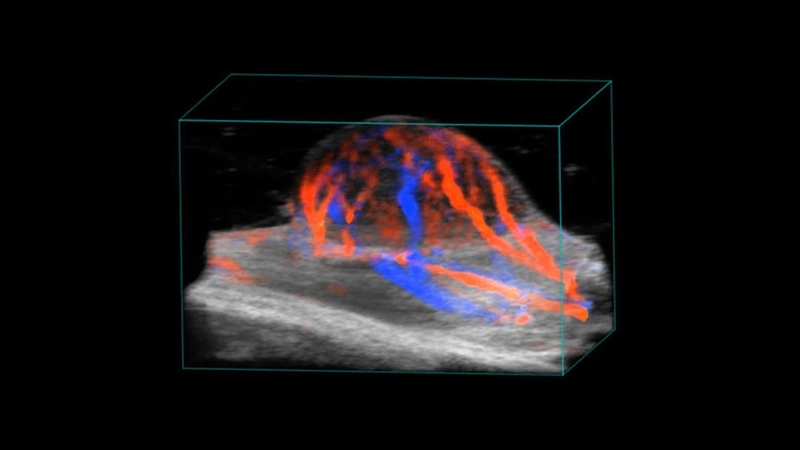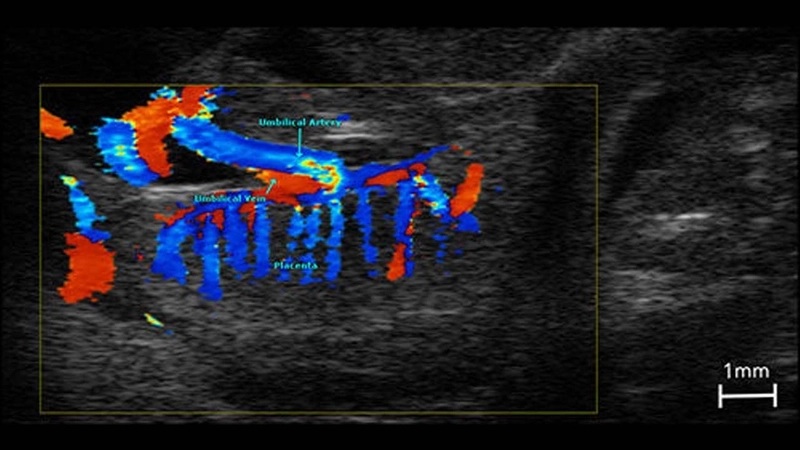Color Doppler
Visualize Flow Velocities Within Vessels to Monitor Direction of Flow
Color doppler mode provides your “road map” – a perfect guidance system
Vessel networks and flow patterns can be laid out in a complex manner. Using Color Doppler, the intensity of the color is a function of velocity. Flow towards and away from the transducer is indicated either as red or blue, respectively. To remember this, use the name of a famous yellow cartoon character as an acronym: BART – Blue Away, Red Towards (with the top of the screen as your reference point).

3D color doppler image of a subcutaneous tumor.

Color doppler image illustrating vasculature in the mid-gestation mouse placenta.